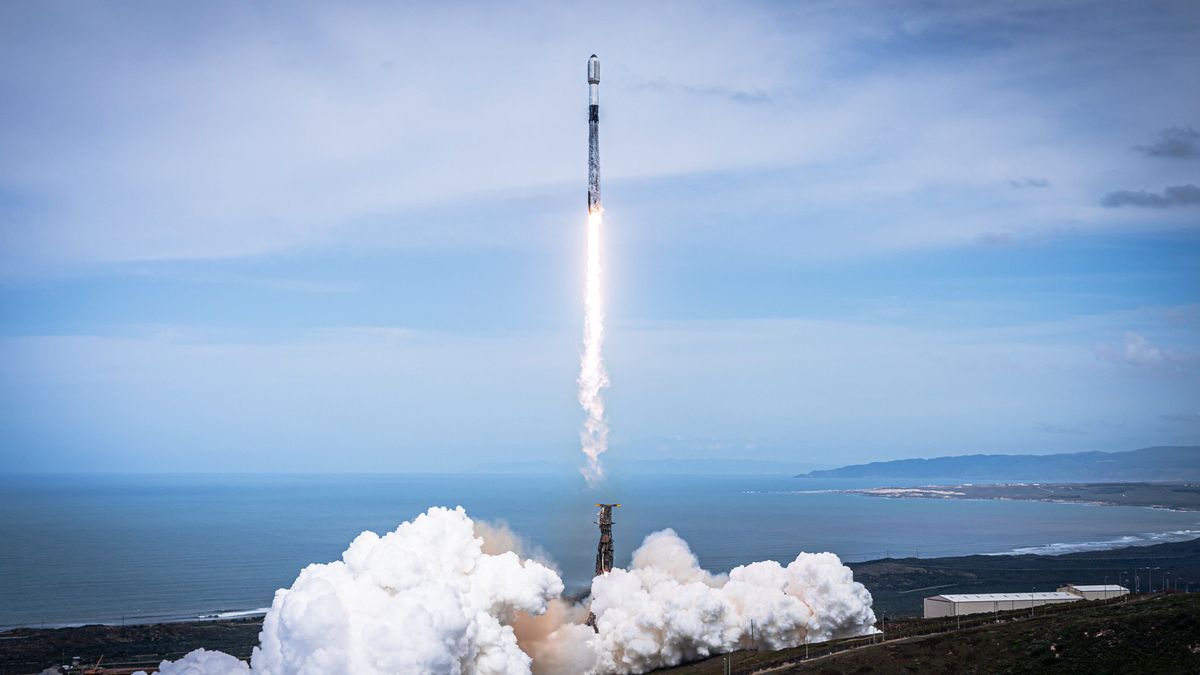The April 1941 issue of Astounding Science Fiction included “Reason,” a story by Isaac Asimov later published in the collection I, Robot. The story in Asimov’s Robot series was set on a space station that beams power in the form of microwaves directly to planets.
More than 30 years later, Peter Glaser, a NASA engineer who worked on, among other projects, the Apollo moon missions, took a big step in turning Asimov’s plot device into reality. Glaser designed — and in 1973 was granted a patent for — a system that would use satellite-mounted solar panels to convert solar energy to microwaves and then beam that energy back to Earth.
At that time, it was “conceptually possible” to imagine a system like Glaser’s in orbit, says Harry Atwater, “but the cost of getting it there was prohibitive.”
Breakthroughs in Space Energy
In recent years, however, space launch costs have decreased dramatically, making the idea of beaming power from space to Earth much more feasible. In fact, Atwater is part of a team at Caltech that just pulled it off. Or at least they demonstrated that it can be done.
In June 2023, they transmitted energy from a satellite in space to a receiver on the roof of their Caltech lab. It wasn’t a lot of energy — enough to light up two LEDs — but it was a major step. Paul Jaffe, an electrical engineer with the U.S. Naval Research Laboratory, works on similar technology at NRL and has been involved in many of the technological breakthroughs that have made this possible.
Read More: How Scientists Create Oxygen for Astronauts on Prolonged Space Missions
The Pros and Cons of Space-Based Solar Power
Space-based power has one big advantage over land-based solar: It’s available 24 hours a day in any kind of weather without the need for batteries. As such, it might be useful as an adjunct to solar power at times and in places without enough sun, experts say.
The technology could also be helpful in providing energy to disaster areas, places with no existing energy infrastructure, and for military applications, Jaffe adds.
However, one of the challenges is cost. Space launches have gotten less expensive, as has much of the technology involved, but it’s still pricey. Meanwhile, as Jaffe puts it, land-based solar power has gotten “stupid cheap.” It’s going to be hard for space-based solar to compete.
Read More: Unraveling the Brightest Gamma Ray Burst of All Time
Concerns About Using Solar Panels in Space
Jaffe says is a very exciting step but warns that it is still the early days of this technology. “There’s a lot of uncertainty with this,” he says. And it’s not just the technological challenges but regulatory and economic issues as well. “I think it’s a critical area for us to be investigating, but there’s certainly no guarantee that this would ever get to the level needed to supply the grid,” he says.
Getting solar energy from solar panels in space to a receiving antenna on Earth means lots of microwaves zipping through the air. Is that safe? Yes, it is, says Ali Hajimiri, a member of the Caltech team.
With this technology, microwaves are spread out so they don’t reach a density that makes them dangerous. In fact, they wouldn’t be any more dangerous than standing outside on a sunny day.
Read More: Solutions for Solar Panel Waste Are Just Beginning to Surface
The Global Race Toward Space Energy
The Caltech team members are not the only ones working on this technology. A 2021 report commissioned by the U.K. government found that space-based solar could potentially provide a substantial amount of the U.K.’s energy needs as soon as 2040, prompting the U.K. government to invest 4.3 million pounds into the project.
Other teams around the world, including teams in the E.U., China and New Zealand, are also working to develop this space-age tech, as are several private companies. This sounds like a 21st-century space race in the making. But it doesn’t have to be a race to see who gets there first.
Jaffe thinks international collaboration is a possibility. He points out that the flourishing global satellite telecommunications system we have today results from a government-fostered international effort. “A similar thing certainly could be done for solar power satellites,” says Jaffe. “It would just require a country or countries to step up with the visionary leadership to do it.”
Read More: Advanced Quantum Material Curves the Fabric of Space














